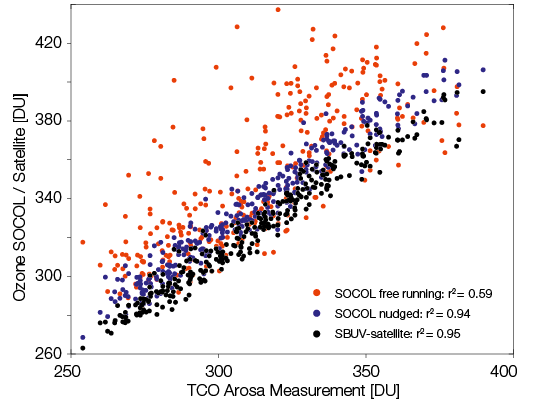Overview
The project INFO3RS aims to investigate the future evolution of Total Column Ozone (TCO) in Switzerland. To support the trend analysis of the development of the ozone layer, additional data sources to ground-based measurements are analysed. The global Chemistry-Climate Model, CCM-SOCOL, developed at PMOD/WRC, and the SBUV satellite data represent an independent data source to potentially enhance the statistical significance of future trends. INFO3RS is funded by the MeteoSwiss GAW-CH programme.


